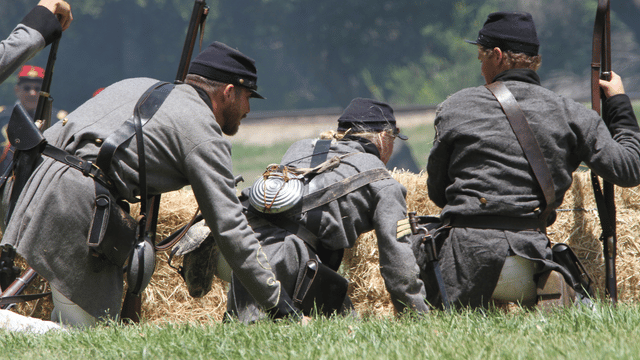
- This event has passed.
The Great Lakes Civil War Forum: Vicksburg Is The Key
September 23, 2023 @ 9:30 am - 4:00 pm

Saturday, September 23 | 9:30am – 4:00pm | $64 ($80 non-members)
Check-in starts at 8:30am, program begins at 9:30am.
Schedule of Presentations
Champion Hill: Decisive Battle for Vicksburg | Presented by Dr. Tim Smith, University of Tennessee-Martin
Through all the long months of operations against Vicksburg, Champion Hill stands as the most decisive battle of that decisive campaign. Fought on May 16, 1863, Champion Hill almost literally decided the fate of Vicksburg and the Confederate army that defended it. Ulysses S. Grant even wrote to his friend William T. Sherman that night, “I am of the opinion that the battle of Vicksburg has been fought.” So why was the fight such a decisive Union victory? Terrain, numbers, and timing all played a role, but in the end, leadership was the biggest factor in victory and defeat. This lecture will compare and contrast Union and Confederate Leadership at Champion Hill and analyze the results mainly within the context of the two generals involved.
Faithful Service, Unselfish Devotion: Wisconsin Anecdotes During the Vicksburg Campaign | Presented by Andrew R. Miller, Lead Interpretive Ranger and Historic Weapons Program Coordinator, Vicksburg National Military Park
Andrew Miller’s program will focus on the service of the over 9000 soldiers from Wisconsin who participated in the campaign to capture Vicksburg.
Forgotten Footnotes – Vicksburg’s Victims of Sickness and Disease | Presented by Rev. Robert Miller
Medical professionals studying the Civil War have concluded that sickness from infectious illness was a major factor affecting the Vicksburg campaign. Confederate forces had a greater total illness rate, diarrhea, and malaria than did the attacking Union forces, and it is reasonable to conclude that medical care affected the outcome of the Vicksburg campaign. Dr. Michael Brown avers that “The South’s significant medical disadvantages and increased risk of infectious diseases ensured a Northern victory.” We will examine the human interest perspective of this aspect of the Vicksburg campaign, reflecting on the toll that sickness and disease played. Also considered will be some of the forgotten stories of people who suffered and died because of health issues. Notable among those who died by disease were General John Bowen, Willie Sherman, and several Catholic clergy ministering to troops at the time.
A New Look at Old Abe’s Color Guard–Analyzing a Historical Image Using Artificial Intelligence | Presented by Xukai Zou, Purdue University Indianapolis
One of the most well-known images of the Civil War is that of the 8th Wisconsin Infantry Color Guard and their live eagle mascot, Old Abe, following the fall of Vicksburg, Mississippi in July 1863. Despite the subsequent fame of this iconic image, the true identities of many of the color guard members have been lost to time. In this work, researchers from Purdue University Indianapolis, assisted by Civil War historians, reexamine evidence from primary and secondary sources to identify a group of soldiers who potentially appear in the image. Using state-of-the-art, artificial intelligence-based face recognition techniques, researchers evaluate the relative likelihood of several of the color guard members’ potential identities. As a result, the identities of several previously unidentified color guard members are proposed, as well as new alternate identities of several previously-identified color guard members.



